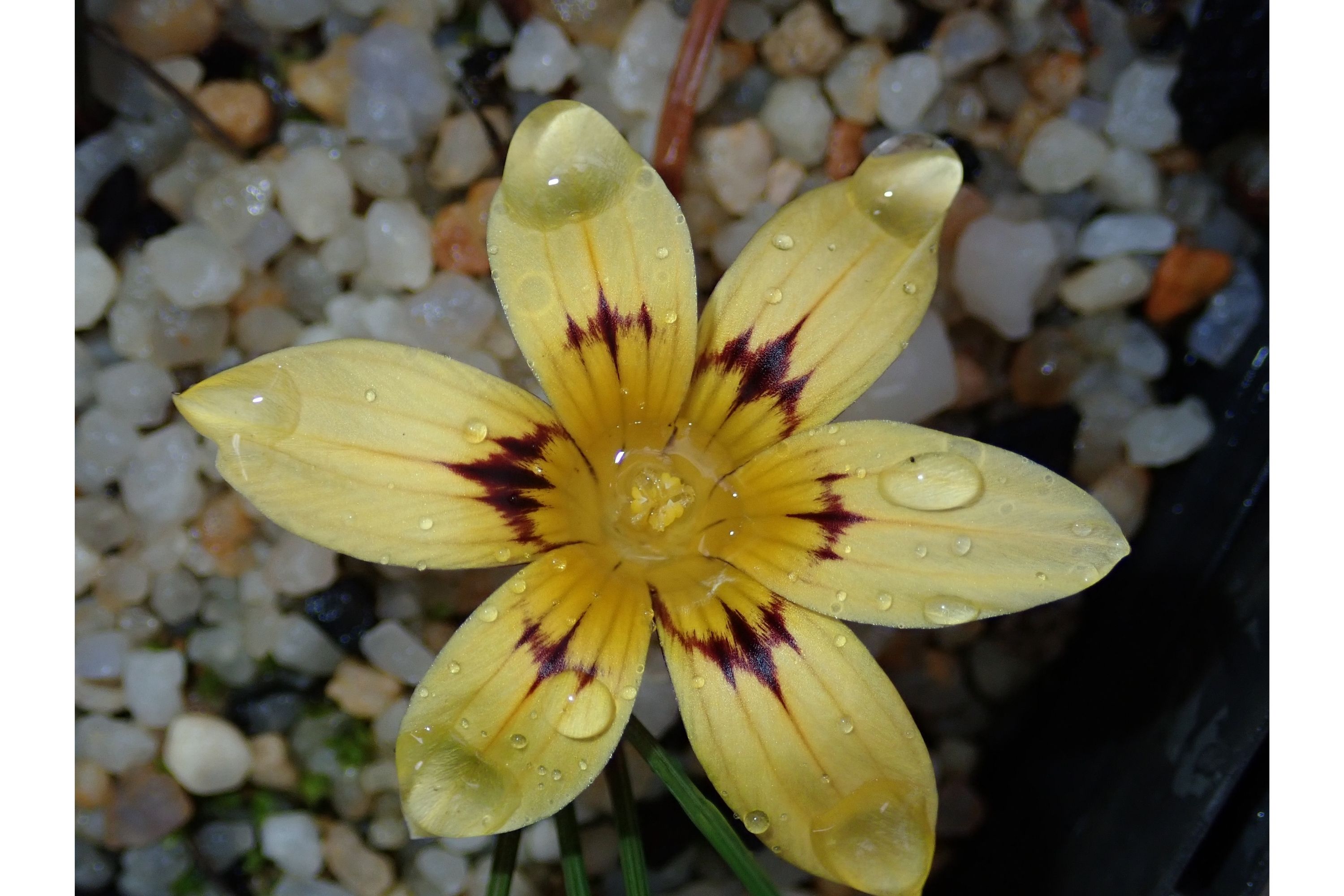Guildford grass
(Romulea columnae)

Description
Romulea columnae, the sand crocus, is a herbaceous perennial in the family Iridaceae. It is a small plant, with thin narrow leaves, and small scape which has small pink, pale purple or violet pointed flowers with darker veining and a gold or yellow throat. It is native to a wide area ranging from western Europe to the Mediterranean. Romulea columnae grows from a small corm. It has one or two basal leaves,and several (up to 3,) cauline (stem) leaves,They are narrow, wiry and curled, and they can grow up to 10 cm (4 in) long. Plants from the Romulea genus are related to members of the crocus genus and look very similar but have several differences, including that Romulea plants do not have the traditional crocus feature of having a white grove in the centre of their leaves. Also that crocus flowers are stemless and grow directly from the corm, where as Romulea plants hold their flowers on a green scape of various lengths. Romulea columnae has a short scape,of up to 3–20 cm (1–8 in) long. In the UK, it is only between 3–4 cm (1–2 in) tall. It blooms early in the year, from February onwards, or between March and May. It has one to three flowers to a corm,most common is a solitary flower, which is small and only reaching between 10 and 12 mm across.The flowers are funnel-shaped,and have 6 pointed (at the tip) petals,which are equally-sized.They are pink,pale purple,or violet.They are greenish-yellow,yellow,or golden-yellow at the centre or throat.They have purple,or violet veins or a dark midvein and a pair of lighter lateral veins.It has a green spathe which is thin and spindly.It has three stamens, topped by yellow,or bright yellow anthers,and the style is shorter than the stamens. It reproduces mostly by making seed. It is found growing on free draining sandy soils that make up coastal cliffs slopes, and coastal grasslands. It can grow on sandy grounds near the sea. Including on golf courses, such as Dawlish Warren course in Devon, which is classified as a Site of Special Scientific Interest (SSSI). Within Africa, it is found in Macaronesia, (within the Madeira Islands, Canarias), Algeria, Morocco and Tunisia. It is found in the Asian countries of Cyprus, Israel, Lebanon, Syria and western Turkey. Within Europe,it is found in south west England, Greece (including Crete), Italy (including the isles of Sardinia and Sicily), France (including the island of Corsica), Spain (including the Balearic Islands) and Portugal. it has naturalized with the Azores.
Taxonomic tree:







